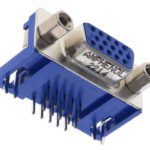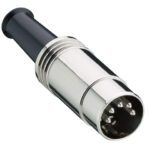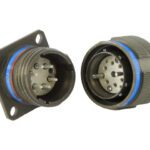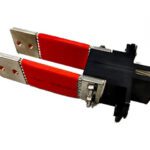What are compression connectors?
Meet the Connector: Compression Connectors
Compression connectors are interconnect devices that rely on pressure to make a secure connection. Compression may occur with the use of a tool; through the turn of a compression nut that is part of the housing, or through another mechanism. A wide variety of connector types may be described as compression connectors or may include a compression feature. Traditional compression connectors have an outer shell or housing that is compressed with a tool to tightly secure the cable within the housing. These components are used in electronic devices but have origins and counterparts in earlier electrical designs and even plumbing fittings.
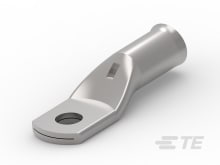
This simple copper compression connector from TE Connectivity features a palm hole and is rated for indoor and outdoor use.
In other compression connector types, an element of the design is compressible, such as contacts, rather than the shell. In some compression connectors, the compression occurs when the connector is positioned between two boards or fit into place, such as a battery connector that is held in position when contacts are compressed.
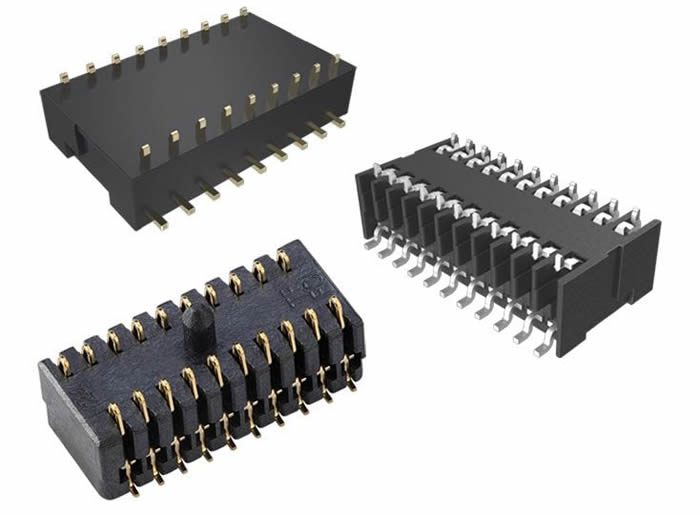
Amphenol Communication Solutions’ surface mount compression connector features a single or double row of compressible contacts and is used in board-to-board applications.
With all types of compression connectors, a tight fit ensures a reliable connection and helps reduce signal loss and interference. This performance feature makes compression-type connectors a popular choice for RF and coax applications. Compression connectors are favored for their ease of installation, good performance in outdoor applications, and good signal integrity.
Design Notes
Standardization: In the electrical and electronic industries, compression connectors are often standardized based on the type of cables they are designed to work with. For instance, in the telecommunications and RF industries, compression connectors for coaxial cables are standardized based on the cable type and connector interface. Common standards include:
RG (Radio Guide) Standards: These standards, developed by the military for coaxial cables, define specific types of coaxial cables and their corresponding connectors. Examples include RG-6, RG-59, RG-11, etc.
SCTE (Society of Cable Telecommunications Engineers) Standards: SCTE defines various standards related to coaxial cable connectors used in cable TV and data distribution systems.
IEC (International Electrotechnical Commission) Standards: IEC standards related to electrical connectors include some compression connector specifications.
ANSI/TIA (American National Standards Institute/Telecommunications Industry Association) Standards: These standards cover telecommunications infrastructure, including connectors used in network cabling and coaxial cable connections.
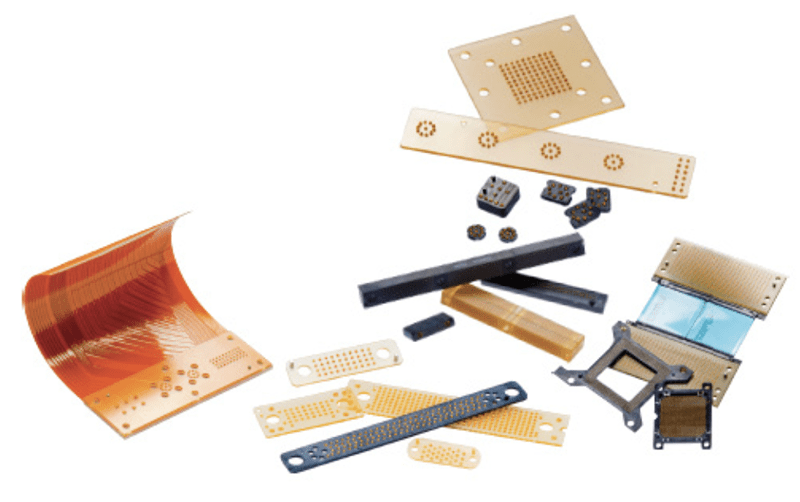
Bel’s CIN::APSE solderless, high-density, custom interconnects are used for board-to-board, IC-to-board, flex-to-board and component-to-board applications. These connectors are positioned and mounted between boards and components using generally available alignment and compression hardware.
Some compression connectors are designed for reusability.
Cable preparation
Compression connectors that work with coaxial cables must follow a specific cable preparation process. Coaxial cables consist of an inner conductor surrounded by a dielectric insulator, followed by an outer conductor shield, and an outer jacket. This jacketing must be stripped back to expose the inner conductor and dialectric so the compression connector can fitted over the prepared cable end. A compression tool is used to compress the connector’s sleeve over the cable to the correct degree of pressure needed to create a secure connection without compromising the integrity of the connection.
Markets, Sectors, and Applications
Consumer/3C, Medical, Datacom/Telecom
In electronic applications, compression connectors are often used for coaxial cables and are specified for telecommunications, television, radio, and data transmission. They are also frequently used in battery connectors, making them a mainstay of consumer and portable devices.
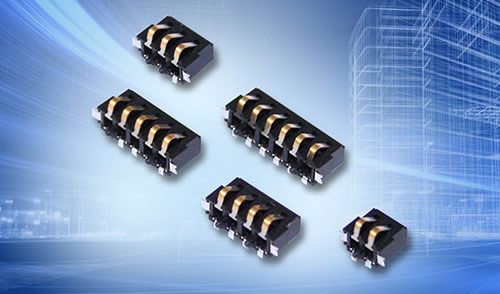
Kyocera AVX’s battery packs/removable modules feature compression contacts.
Suppliers
Airborn, Amphenol Communication Solutions, Bel, Kyocera AVX, Molex, Samtec Inc., TE Connectivity
Related products:
- Battery connectors
- RF coaxial connectors
Learn more about RF coaxial connectors.
Like this article? Check out our other Meet the Connector, RF and Coax connectors, our Transportation Market Page, and our 2022 and 2023 Article Archive.
Subscribe to our weekly e-newsletters, follow us on LinkedIn, Twitter, and Facebook, and check out our eBook archives for more applicable, expert-informed connectivity content.
- Where in the World is Amphenol LTW’s Luc Kan? - April 23, 2024
- TE Connectivity’s Sustainability Efforts Pay Off - April 23, 2024
- What is a VGA Connector? - April 23, 2024
